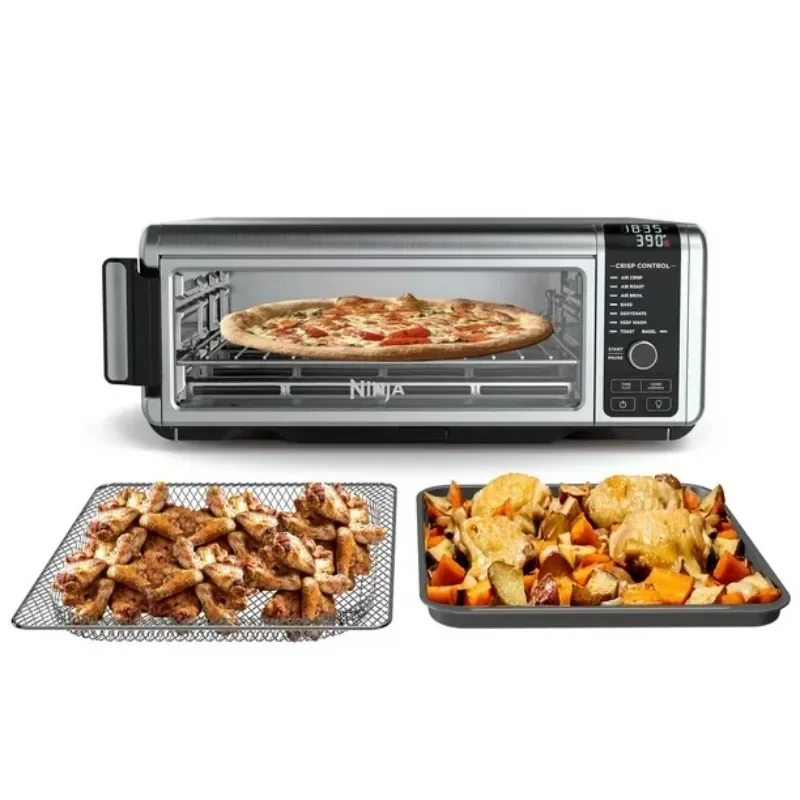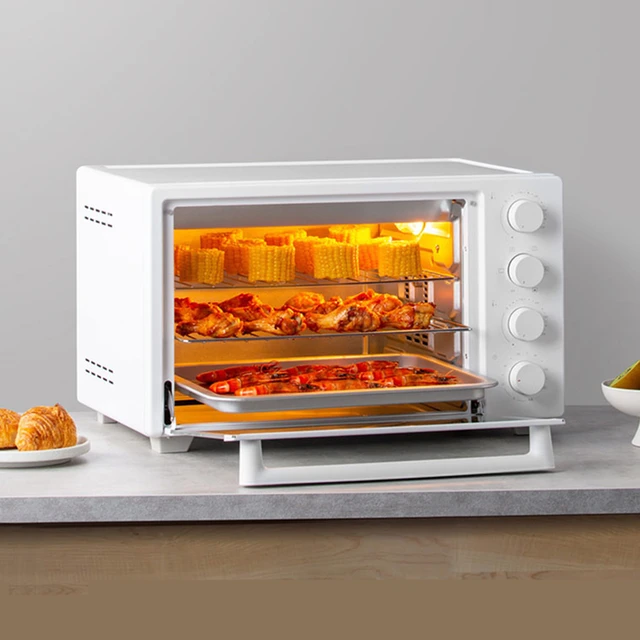Introduction:
Baking is a delightful culinary activity that brings joy and delicious treats to our tables. However, the choice between baking in an electric oven or a gas oven can sometimes leave home cooks wondering if there are any differences in the baking process and outcomes. In this article, we will explore the similarities and differences between gas vs electric oven for baking. We will discuss various factors such as heat source, temperature control, moisture retention, and overall performance to help you understand how baking in each type of oven may vary. By understanding these distinctions, you can make informed decisions and achieve excellent baking results, regardless of gas vs electric oven for baking cakes you have.

Is baking in an electric oven the same as gas?
Heat Source and Heat Distribution:
a. Electric Ovens: Electric ovens utilize heating elements located at the top and bottom of the oven cavity to generate heat. These elements become hot and radiate heat throughout the oven, creating a consistent temperature environment for baking.
b. Gas Ovens: Gas ovens, on the other hand, rely on a gas flame as the heat source. When the gas is ignited, it produces heat that is evenly distributed throughout the oven cavity. The heat is usually circulated by a fan or natural convection.
c. Heat Distribution: Both electric and gas ovens are capable of providing even heat distribution within the oven cavity, ensuring that the baked goods cook uniformly. However, electric ovens may have a slight advantage in terms of more precise temperature control and consistent heat distribution due to the nature of their heating elements.
Temperature Control of electric oven vs gas oven for baking:
a. Electric Ovens: Electric ovens generally offer more precise temperature control compared to gas ovens. They usually feature digital thermostats that allow you to set and maintain the desired temperature accurately. This precise control is beneficial when following recipes that require specific temperature settings.
b. Gas Ovens: Gas ovens traditionally use manual controls, often in the form of knobs or dials, to adjust the temperature. While gas ovens can achieve a wide range of temperatures suitable for most baking needs, the temperature control may be slightly less precise compared to electric ovens. However, modern gas ovens with digital controls offer improved temperature accuracy.
c. Adjusting for Temperature Differences: When switching between electric and gas ovens, it may be necessary to make slight adjustments in baking time or temperature settings to account for any variations in temperature control and heat distribution.
Moisture Retention of baking in a gas oven vs electric:
a. Electric Ovens: Electric ovens tend to have drier heat compared to gas ovens. The absence of moisture produced by a gas flame in electric ovens can lead to faster moisture evaporation during baking, which may affect the texture and moisture content of certain baked goods.
b. Gas Ovens: Gas ovens create a more humid baking environment due to the water vapor produced during the combustion of natural gas. This added moisture can be beneficial for certain baked goods, such as bread and pastries, as it helps prevent excessive drying and promotes a desirable texture.
c. Moisture Adjustments: When using an electric oven, it may be necessary to adjust baking times or employ techniques like covering or tenting with foil to retain moisture in baked goods that are more sensitive to drying out.
Performance in Different Baking Tasks:
a. Baking Bread: Gas ovens, with their humid baking environment, are often preferred for baking bread. The added moisture helps create a crisp crust and a soft interior. However, electric ovens can also produce excellent bread results, especially when using techniques like steam injection or baking stones to enhance moisture retention.
b. Baking Pastries: Electric ovens can provide precise temperature control necessary for delicate pastries. The drier heat of electric ovens promotes effective browning and crispness, which is desirable for many types of pastries.
c. Roasting Meats: Both electric and gas ovens are suitable for roasting meats. Gas ovens, with their moist heat, can help keep meats juicy and moist. Electric ovens, with their precise temperature control, allow for more accurate roasting and browning.
d. Cakes and Cookies: Both electric and gas ovens can produce excellent cakes and cookies. However, it is essential to monitor baking times and temperature adjustments when switching between oven types to account for any variations in heat distribution and moisture.
Preheating and Cooking Times
Preheating in Electric Ovens
Preheating is essential for successful baking. Electric ovens typically require longer preheating times compared to gas ovens. While you may wait several minutes, this time is crucial. A properly preheated oven ensures that the food begins cooking at the intended temperature.
Additionally, electric ovens stay as hot as gas varieties, even during baking. Once preheated, they consistently maintain temperature. Consequently, recipes often turn out as anticipated, enhancing overall satisfaction.
Moreover, many electric ovens feature helpful indicators. These lights signal when they reach the desired temperature. This can lessen the chance of errors while baking. Therefore, electric ovens offer a structured preheating process, which many bakers appreciate.
Preheating in Gas Ovens
In contrast, gas ovens heat up quickly. The flame allows immediate heat production, cutting down preheating time significantly. This advantage makes gas ovens a favorite among those in a hurry. However, speed isn’t the sole benefit of gas ovens. Their ability to reach high temperatures also enhances cooking effectiveness.
Despite the quicker preheating, gas ovens require more vigilance. It’s essential to ensure the flame remains steady during cooking. Variations in the flame can lead to uneven cooking. Therefore, regular checks are vital for achieving the best results.
Flavor Profiles and Cooking Results
The Unique Taste from Electric Ovens
Electric ovens are known for their dry heat. Consequently, this environment can lead to different flavor profiles. Baked goods may possess a uniform texture and moisture level. It’s often reported that cakes baked in electric ovens rise more evenly. Moreover, the consistent temperature enhances overall flavor development. There are fewer surprises during the baking process.
However, some bakers may miss the unique flavors produced in gas ovens. While electric ovens excel in convenience, they may lack that special charm. Nonetheless, if you prioritize consistency, the results might be more predictable.
The Desirable Results with Gas Ovens
Gas ovens impart a unique quality to baked goods. The moist environment contributes to a distinct texture. Many bread lovers appreciate the crust produced in gas ovens. The evenly charred surfaces often create a richer flavor profile. Cookie enthusiasts also enjoy the slight chewiness achieved using gas.
However, achieving those results requires practice and adjustment. Bakers must monitor their dishes closely to overcome temperature inconsistencies. This dedication often pays off with extraordinary flavor.
Cost-Effectiveness and Efficiency
Electric Ovens: Initial Investment and Long-term Use
When purchasing an oven, the initial cost can vary. Electric ovens tend to be slightly cheaper upfront. However, they may require more energy consumption. Consequently, energy costs can increase over time, potentially affecting long-term affordability.
Nonetheless, electric ovens often come with more features. Many models include convection fans and smart technology. These advancements can improve efficiency and convenience. Therefore, while the upfront cost might be lower, consider potential electric bills.
Gas Ovens: Pricing and Maintenance Concerns
Gas ovens typically come with a higher initial cost. The prices vary depending on the models and features included. However, running costs may be lower, given gas is generally cheaper than electricity. Thus, when considering long-term costs, gas ovens can be more economical.
Moreover, gas ovens require maintenance as well. The burners need regular checking for cleanliness. Blocked burners may lead to uneven cooking and safety concerns. Be prepared to dedicate time to ensure optimal results.
Environmental Considerations
Electric Ovens: Sustainability and Efficiency
Electric ovens have become more energy-efficient in recent years. Many models feature eco-friendly settings that minimize energy use. If you’re concerned about the environment, consider investing in energy-rated electric ovens. The better the rating, the less energy consumed, thus reducing your carbon footprint.
Additionally, various renewable energy sources power electric ovens. If you utilize solar or wind energy, your baking could be entirely carbon neutral. This factor plays a significant role in many consumers’ choices today.
Gas Ovens: Considerations for Emission
Gas ovens’ environmental impact often raises concerns. They produce carbon emissions due to burning fossil fuel. While gas generally burns cleaner than some other sources, it still contributes to greenhouse gases. As public awareness of sustainability grows, many consumers reconsider their oven choices.
However, many gas ovens are designed to maximize efficiency. Various models deliver robust performance while minimizing waste. Therefore, it’s essential to weigh the benefits and impacts of each option.
Conclusion:
While baking in an electric oven and a gas oven may have slight differences, both can produce excellent baking results. Electric ovens offer precise temperature control, consistent heat distribution, and drier heat, making them suitable for delicate pastries and achieving crispness. Gas ovens provide a more humid baking environment and can be advantageous for bread baking, moisture retention, and roasting meats. Adjustments in baking time, temperature, and moisture retention techniques may be necessary when switching between oven types. Consider energy efficiency, operating costs, and safety considerations when choosing an oven type. Ultimately, with proper understanding, adjustments, and adherence to baking techniques, both electric and gas ovens can deliver delectable baked goods to satisfy your culinary desires.

